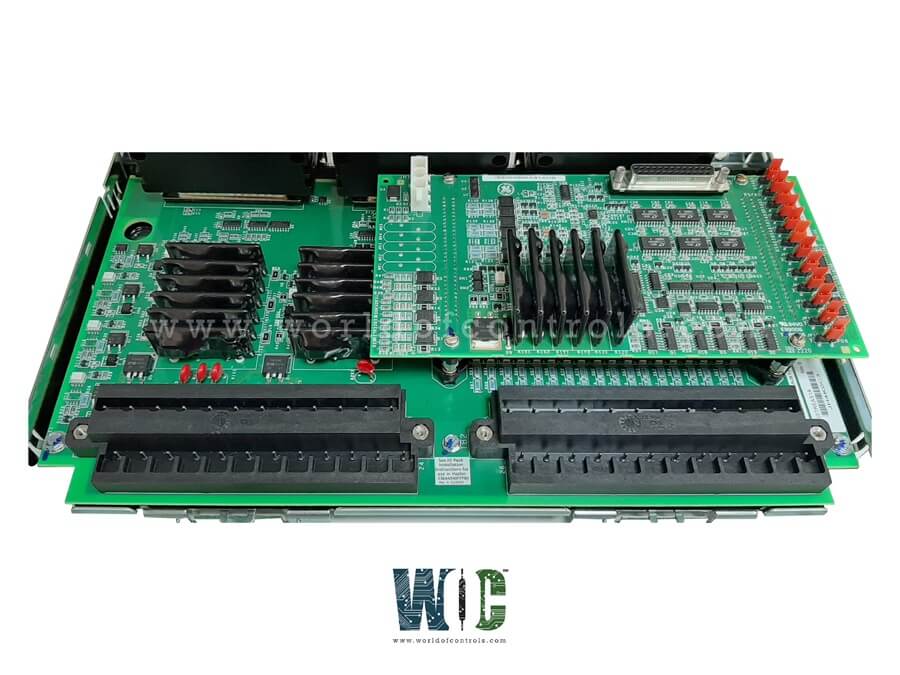
World Of Controls understands the criticality of your requirement and works towards reducing the lead time as much as possible.
IS210TRESH2A - Emergency Trip Terminal Board is available in stock which ships the same day.
IS210TRESH2A - Emergency Trip Terminal Board comes in UNUSED as well as REBUILT condition.
To avail our best deals for IS210TRESH2A - Emergency Trip Terminal Board, contact us and we will get back to you within 24 hours.
SPECIFICATIONS:
Part Number: IS210TRESH2A
Manufacturer: General Electric
Series: Mark VIe
Number of trip solenoids: 3
Trip Solenoid Rating: 125 V dc
Product Type: Emergency Trip Terminal Board
Technology: Surface Mount
Common Mode Voltage Range: ±5 V
Dimensions: 17.8 cm wide x 33.02 cm
Operating temperature: 0 to 60 °C
No.of Analog Voltage Inputs: 6
Repair: 3-7 Day
Availability: In Stock
Country of Origin: United States
Manual: GEH-6421M
FUNCTIONAL DESCRIPTION:
IS210TRESH2A is an Emergency Trip Terminal Board manufactured and designed by General Electric as part of the VIe Series used in GE Distributed Control Systems. The Small Steam Turbine Emergency Trip (TRES) terminal board is used for emergency overspeed protection for small/medium size steam turbines. The VPRO protection module controls TRES and powers three emergency trip solenoids, which can be connected between the TRES and TRPS terminal boards. TRES provides the positive side of the 125 V dc to the solenoids and TRPS provides the negative side. The VPRO provides emergency overspeed protection, and emergency stop functions, and controls the three relays on TRES, which control the three trip solenoids.
In the TRES, the seven dry contact inputs excitation and signal are monitored and fanned to the protection module. The board includes the synch check relay driver, K25A, and associated monitoring, the same as on TREG, and the servo clamp relay driver, K4CL, and its associated monitoring. A second TRES board cannot be driven from the protection module.
INSTALLATION:
The three trip solenoids are wired to the first I/O terminal block. Up to seven trip interlocks are wired to the second terminal block. The wiring connections are shown in the following figure. Connector J2 carries three power buses from TRPS, and JH1 carries the excitation voltage for the seven-trip interlocks.
OPERATION:
The VSVO protection module controls TRES. A third cable carries a trip signal from J1 to the TSVO terminal board in simplex systems, providing a servo valve clamp function upon turbine trip. Both TREL and TRES control the trip solenoids 1 and 2 so that either one can remove the power and actuate the hydraulics to close the steam or fuel valves. ETR3 is set up to supply power to trip solenoid #3. The nine trip relay coils on TRES are supplied with 28 V dc from the I/O controller. The trip solenoids are supplied with 125 V dc (or 24 V dc) through plug J2 and draw up to 1 A with a 0.1 second L/R time constant.
WOC has the largest stock of OEM replacement parts for GE Distributed Control Systems. We can also repair your faulty boards and supply unused and rebuilt boards backed up with a warranty. Our team of experts is available round the clock to support your OEM needs. Our team of experts at WOC is happy to assist you with any of your automation requirements. For pricing and availability on parts and repairs, kindly contact our team by phone or email.
What is an Emergency Trip Terminal Board (ETTB)?
An Emergency Trip Terminal Board (ETTB) is a vital component of electrical systems designed to ensure the safety and protection of equipment and personnel. It is a manual disconnect switch that can be activated during emergencies or maintenance procedures to quickly de-energize circuits.
How does the ETTB integrate with turbine control systems?
The ETTB is typically integrated into the control logic of the turbine system, allowing it to receive signals from various sensors and control elements to initiate a trip when abnormal conditions are detected.
How are boards packaged for shipment from WOC?
Parts are placed in antistatic packets and securely packed in ESD boxes cushioned with ESD Foam designed to safeguard electrical components.